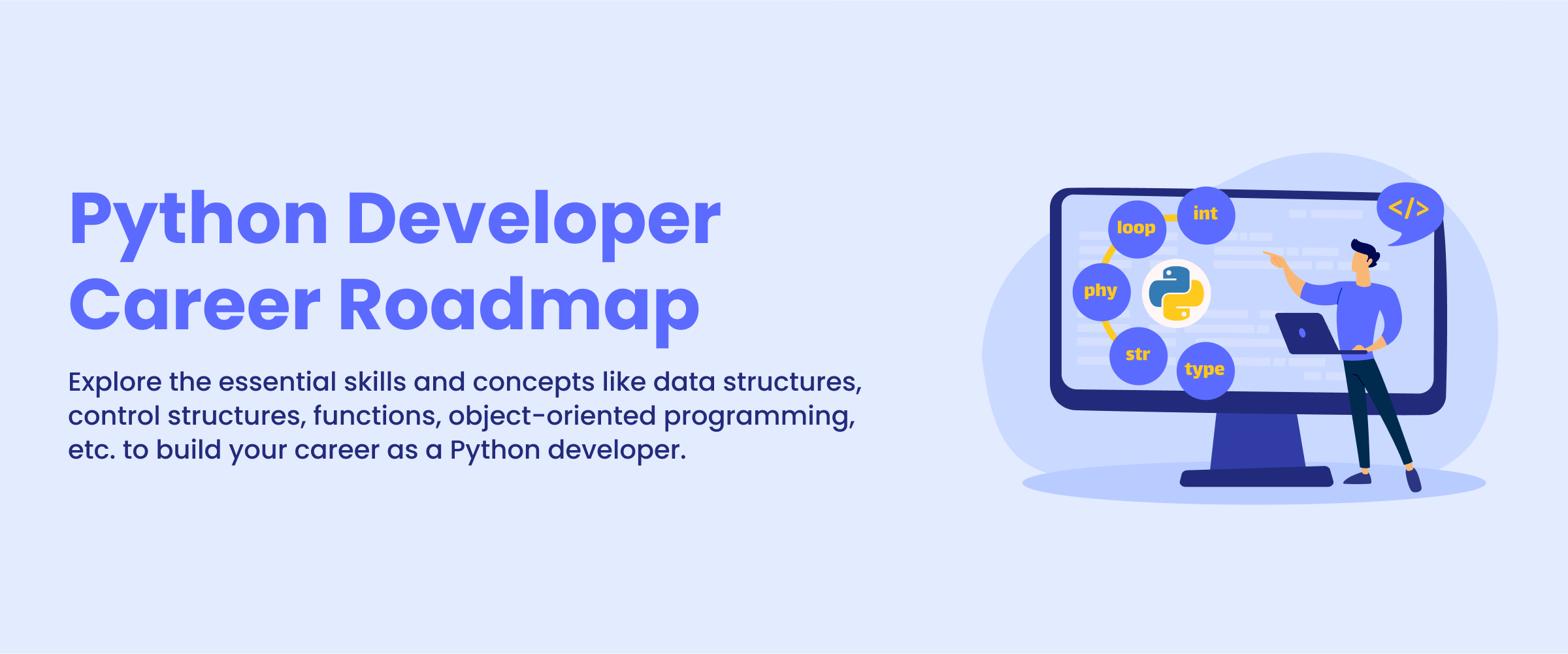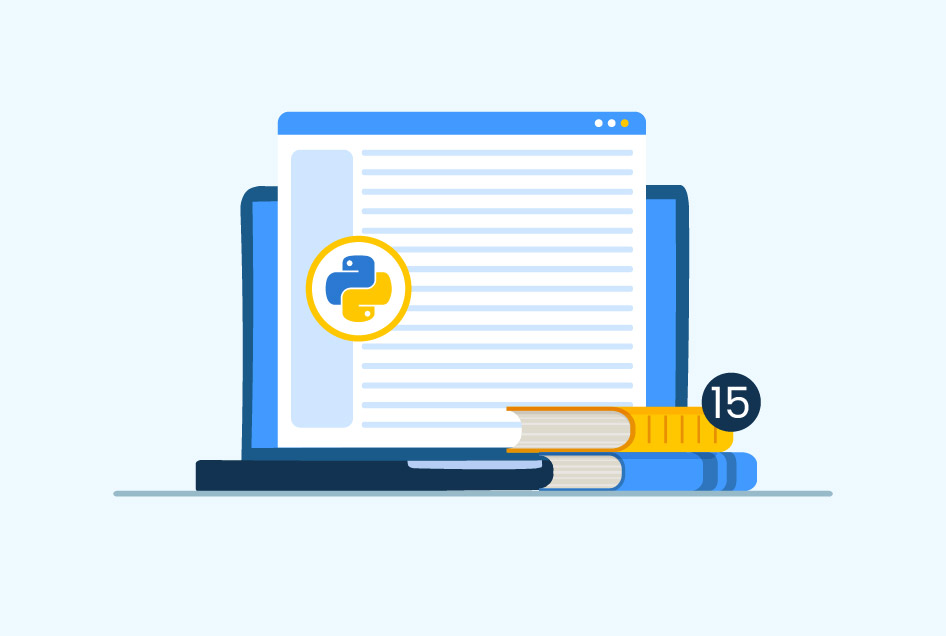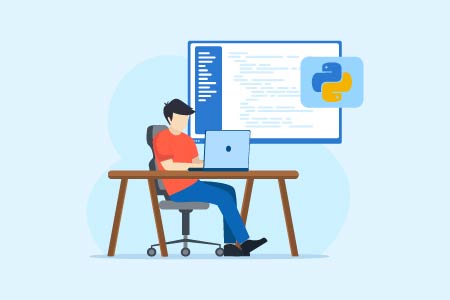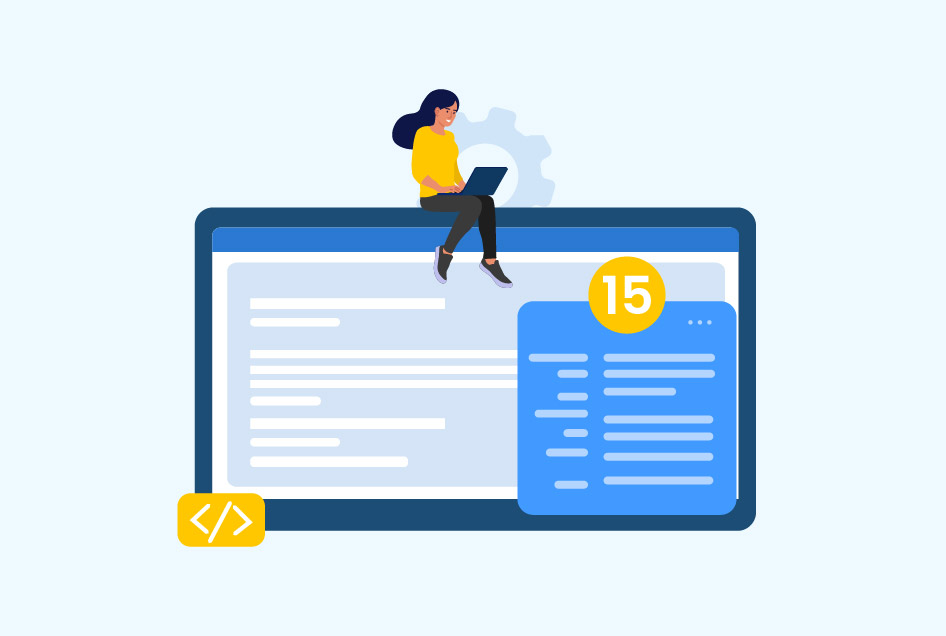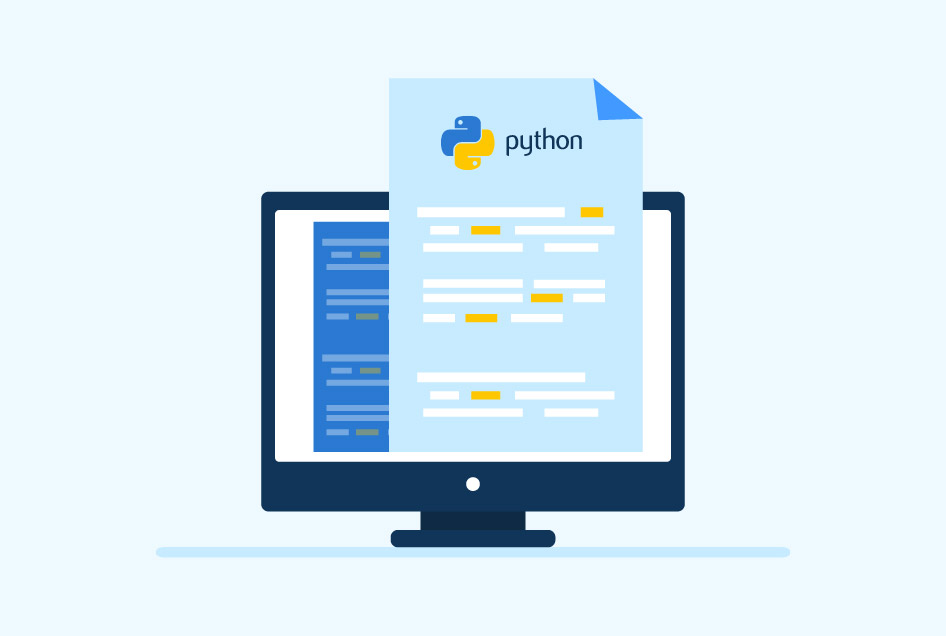Python Developer Roadmap: Steps to a Successful Career
Python is a high-level, general-purpose programming language known for its simplicity, versatility, and readability. Its extensive libraries and frameworks make it popular for web development, data science, machine learning, and automation. As businesses increasingly rely on data-driven insights and automation, proficiency in Python is a valuable asset for career growth and advancement in the ever-evolving tech industry.
Additionally, Python’s community and widespread adoption by tech giants like Google, Facebook, and NASA highlight its significance in the programming world. This Python developer roadmap equips you with steps to follow to become a skilled and qualified Python developer.
How to Become a Python Developer?
Python is a vast programming language with diverse Python features. You can follow the given Python developer roadmap to learn this programming language with ease.
Step 1: Start With Basic Python Skills
Begin your journey by acquiring basic Python skills and familiarizing yourself with the fundamental concepts of the language. You can also consider opting for a Python course or leveraging YouTube to explore the language by yourself. Here are a few concepts to build a strong grasp of the language.
- Data Types
Python data types define the kind of values a variable can hold, such as integers, floats, strings, lists, tuples, dictionaries, and booleans. Understanding and utilizing data types effectively is essential for efficient programming, enabling the manipulation and interpretation of data within Python programs. - Variables and Operations
Variables in Python serve as containers for data, allowing manipulation through various operations like arithmetic (+, -, *, /), logical (and, or, not), and comparison (==, !=, <, >). Python’s dynamic typing feature enables variables to hold different data types during execution, providing flexibility in handling diverse data structures and operations. - Control Flow
Control flow structures, including if-else statements, loops (for, while), and switch-case constructs, play a vital role in managing the execution flow of Python programs. By controlling the sequence in which code blocks are executed based on conditions or iterations, control flow mechanisms enhance the flexibility and responsiveness of Python applications. - Functions
Functions in Python encapsulate reusable code blocks, promoting modularity and code reusability. They accept inputs, perform specific tasks, and return outputs. The language offers an extensive Python functions list to enhance code readability, maintainability, and efficiency by breaking complex tasks into smaller, manageable units.
- Object-Oriented Programming (OOPs)
OOPs in Python involve creating classes to represent real-world entities, and encapsulating data (attributes) and behavior (methods) within objects. This paradigm promotes code organization, reusability, and scalability by modeling entities as objects with defined properties and actions. OOP concepts like inheritance, polymorphism, and encapsulation enhance code structure and maintainability.
Step 2: Level Up With Data Wrangling, Functional Programming, & More
Once you have built a strong understanding of the basics of Python, you can move to the next step of the full-stack Python developer roadmap by learning intermediate-level concepts of the language. These concepts enable you to develop refined software, websites, and applications.
- Data Wrangling and Preprocessing
Data wrangling, also known as data munging, is the process of cleaning, structuring, and enriching raw data into a desired format for better analysis. Preprocessing involves preparing data for machine learning tasks by normalizing, transforming, and handling missing values. In Python, libraries like Pandas, NumPy, and Scikit-learn provide tools for efficient data wrangling and preprocessing. - Functional Programming (FP)
Functional programming is a way of writing computer programs that focuses on using mathematical functions to perform tasks. The emphasis is on evaluating functions to get results without manipulating the state of the program. It focuses on defining what to do instead of performing actions. Python supports functional programming through features like string functions, lambda functions, map, filter, and reduce functions. - String Concatenation and Formatting
String concatenation is the process of combining two or more strings into a single one, while string formatting involves inserting values into a string in a predefined format. Python provides several methods for string concatenation, such as the ‘+’ operator, join() function and f-string formatting. These techniques enhance readability and maintainability in Python applications.
Step 3: Master Advanced Python Skills
The third step of the Python developer roadmap is mastering the language by gaining insights about more advanced concepts. By learning these concepts, you can leverage the power of Python effectively and explore lucrative career prospects. The advanced topics of Python typically consist of the following:
- Decorators
Decorators in Python are functions that allow you to add new functionality to existing functions or methods without modifying their source code. They “decorate” the original function by wrapping it with additional behavior. Decorators are represented by the “@” symbol followed by the decorator name, placed just before the decorated function. They are an essential aspect of Python’s metaprogramming capabilities, promoting code reusability and modularity. - Generators
Generators in Python are special functions that return an iterator, allowing you to iterate over a sequence of values without creating the entire sequence in memory. Generators use the “yield” keyword to produce values one at a time, making them more memory-efficient than traditional lists or tuples. They are particularly useful when dealing with large data sets or when you want to implement custom iterators. - Context Managers
Context managers in Python are used to ensure that a specific block of code is executed with a certain context, such as opening and closing a file or establishing a database connection. They are typically implemented using the “with” statement, which automatically handles setup and cleanup tasks. Python’s built-in context managers include file objects, while custom context managers can be created using the “contextlib” module. - Memory Management
Python automatically manages memory through a garbage collector, which frees up memory by reclaiming objects that are no longer in use. Python’s memory management system is designed to be efficient and easy to use, eliminating the need for manual memory allocation and deallocation. However, understanding how Python manages memory can help you optimize your code and avoid common pitfalls, such as memory leaks.
Step 4: Familiarize Yourself with Python Frameworks
Python frameworks are pre-built modules offering common functionality for app development, simplifying the process by providing general guidelines and pre-built components. They cover full-stack, micro, and asynchronous types, offering features like URL routing, form handling, and database connection.
- Django: Django is a full-stack Python framework known for its “batteries-included” approach, offering a robust set of features like ORM, authentication, and an admin panel. It simplifies web development by providing tools for URL routing, form handling, and database interaction.
- Flask: Flask is a lightweight microframework ideal for small to medium projects, emphasizing simplicity and flexibility. It offers essential components for web development, such as URL routing and request handling, allowing developers to add features as needed.
- Web2ply: Web2py is a full-stack framework focusing on simplicity and ease of use. It provides features like a built-in ticketing system, web-based IDE, and automatic form generation. Web2py simplifies web application development by offering a comprehensive set of tools and functionalities.
Step 5: Gain Knowledge About Python Libraries
Python libraries are pre-written code collections that offer assistance in various programming tasks, simplifying and expediting coding processes. They are versatile and efficient, making Python a popular choice for a wide range of applications. Here are the top three Python libraries and their uses:
- NumPy
NumPy is a Python library for numerical computing, offering a powerful N-dimensional array object for scientific computing and data analysis. It is faster than Python lists for numerical operations, providing element-wise operations, linear algebra, and various array functions. NumPy is used extensively in scientific computing, machine learning, and data analysis. - Pandas
Pandas, a Python library for data science, provides data manipulation and analysis capabilities for Python. It offers a high-performance, flexible data structure called DataFrame, which is a two-dimensional labeled data structure with columns potentially of different types. Pandas simplifies data manipulation tasks like filtering, sorting, and aggregating data. - Scikit-Learn
A library that provides machine learning capabilities for Python. It is built on NumPy, SciPy, and Matplotlib, and offers a wide range of machine-learning algorithms for classification, regression, clustering, and dimensionality reduction. Scikit-Learn is known for its simplicity and ease of use, making it an ideal choice for beginners and experts alike.
Step 6: Strengthen your Python Skills with Projects
The final stop of the Python developer roadmap is working on Python projects. These projects facilitate you in gaining deeper insights into the functioning of the programming language. Furthermore, they enable you to identify weak areas and improve them, assisting you in building a firmer grasp of the fundamentals.
Conclusion
This Python developer roadmap familiarized you with the step-by-step process of learning Python language. Follow these five simple steps to develop a strong understanding, master the language, and unlock exciting career opportunities in Python, data science, machine learning, and more. Furthermore, you can join Python communities or attend Python workshops to gain industry insights and learn from others’ experiences.
FAQs
To become a Python developer, you typically need a bachelor’s degree in computer science, information technology, or a related field. However, self-taught individuals with strong Python programming skills can also become Python developers. Essential qualifications include proficiency in Python, understanding of data structures, algorithms, and object-oriented programming, and experience with popular Python libraries and frameworks.
The time it takes to become a Python developer depends on your prior programming experience and the amount of time you dedicate to learning. For beginners with no programming experience, it can take several months to a year to become proficient in Python. However, experienced programmers with a solid background in another programming language can learn Python in a few weeks to a few months.
To start a career in Python, you can follow these steps:
a) Learn Python: Start by learning Python programming concepts, data structures, algorithms, and object-oriented programming.
b) Practice: Practice coding by working on small projects or contributing to open-source projects.
c) Build a Portfolio: Showcase your Python skills by building a portfolio of projects that demonstrate your proficiency in Python.
d) Network: Connect with other Python developers and attend Python conferences and meetups to learn about job opportunities and industry trends.
e) Apply for Jobs: Look for Python developer job openings on job portals, company websites, or through networking. Tailor your resume and cover letter to highlight your Python skills and experience.
f) Keep Learning: Continuously improve your Python skills and stay up-to-date with the latest libraries and frameworks to stay competitive in the job market.

